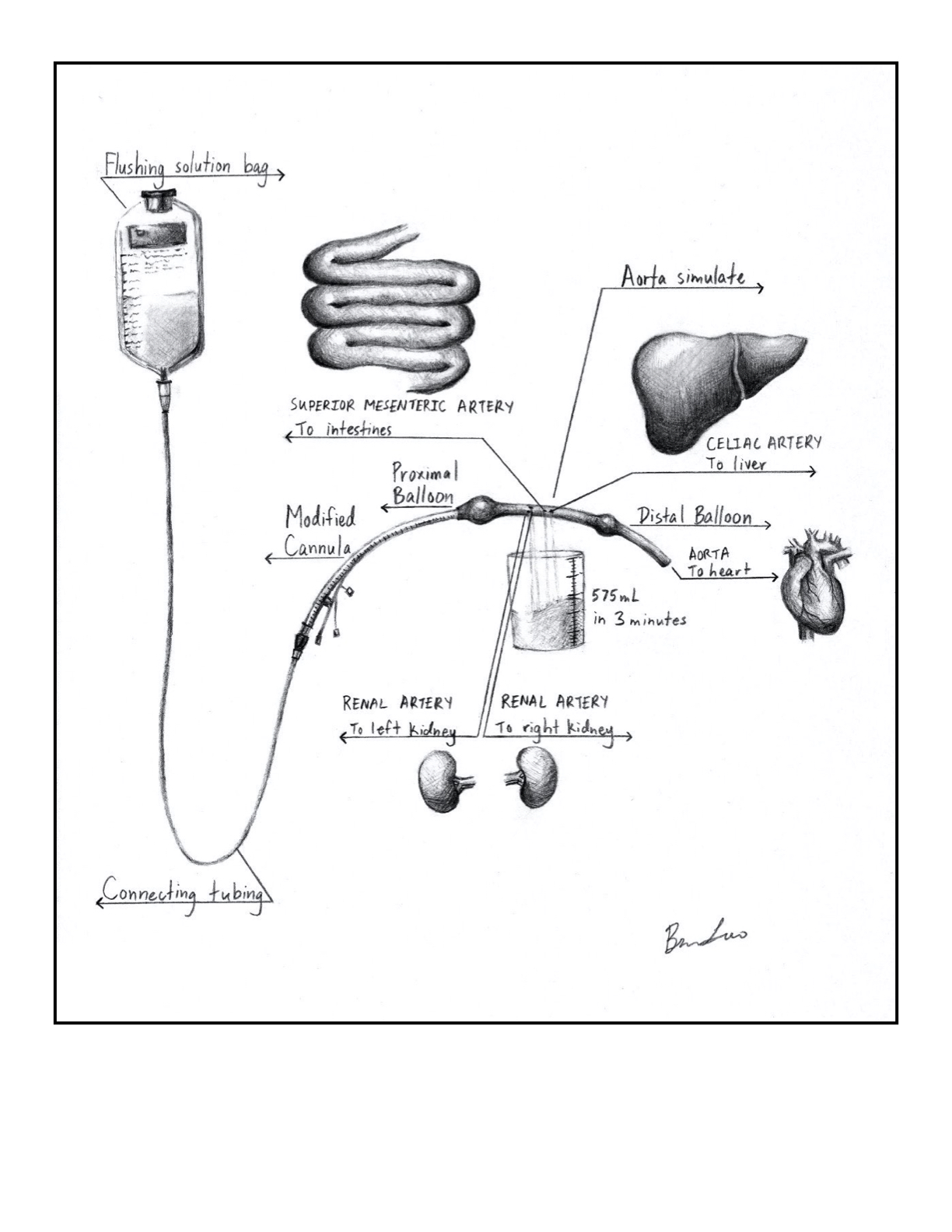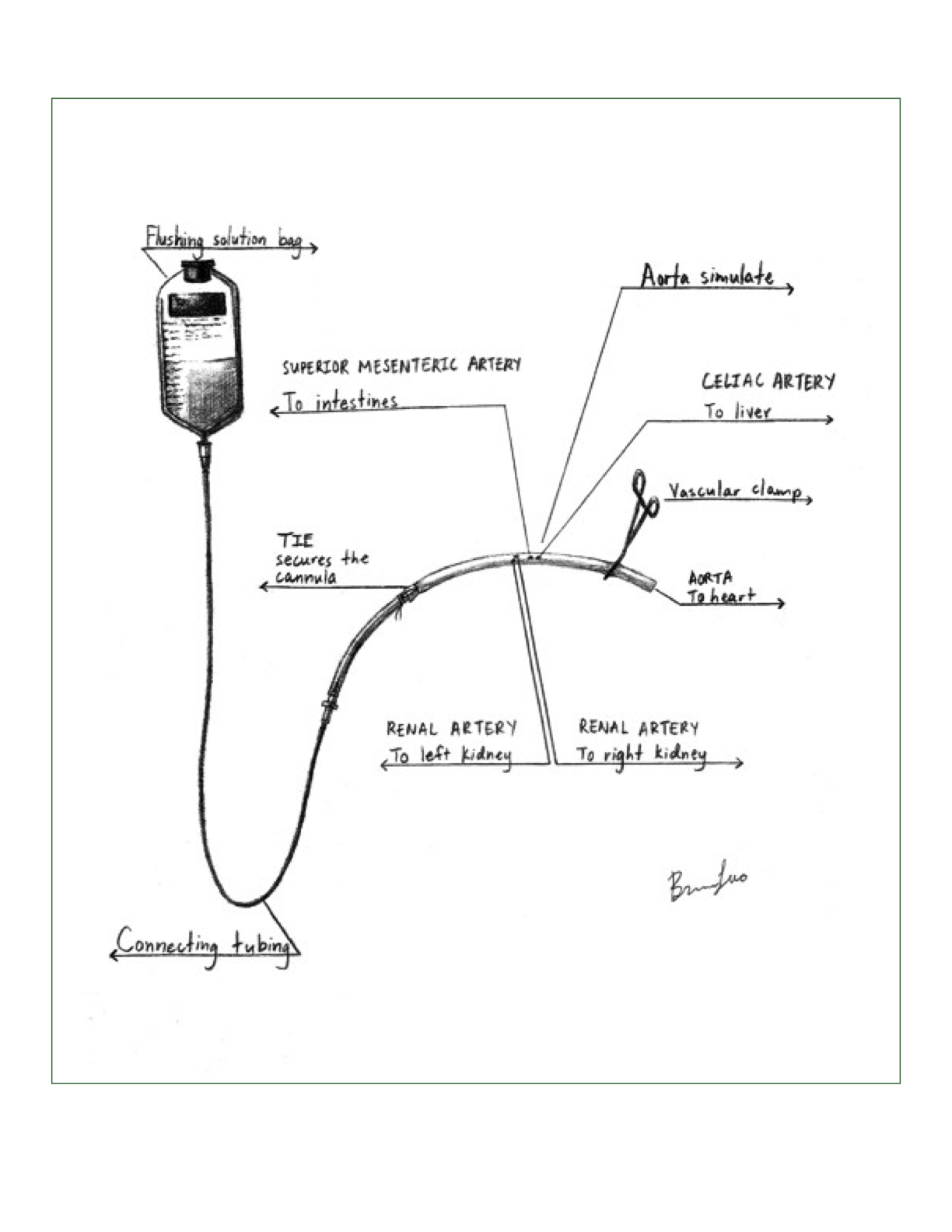Novel fast cold flushing cannulation for transplant organ procurement
Erica Ladham1, Brianna Luo2, Yigang Luo3.
1College of Medicine, University of Saskatchewan, Saskatoon, SK, Canada; 2Physiology, McGill University, Montreal, QC, Canada; 3Surgery, University of Saskatchewan, Saskatoon, SK, Canada
Introduction: A reliable and fast cannulation of aorta in organ procurement for transplantation, is critical, especially for DCD (donation after circulatory death). By shortening warm ischemia time, a better donor organ quality is expected against delay graft function (DGF up to 60%) and primary non-function (PNF, up to 5%) in post transplant recipients of DCD organs.
Present study used an in vitro simulate set-up to test the concept of a novel reliable and fast cold flushing cannulation for transplant organ procurement.
Method: a 1/2" ArgyleTM Penrose Tubing 20cm long was used to simulate the abdominal aorta with 4 side holes simulating as celiac artery, superior mesentery artery and bilateral renal arteries, while a PHYCON (I.D. 7.0mm, O.D. 10.7/12.5mm ORAL) endotracheal tube was used as a double balloon cannula in study group(Fig 1), and a traditional MAQUET 21 Fr cannula was used in control group(Fig 2).


In the study group, we inserted the double balloon cannula into the simulate abdominal aorta, inflated both balloons, began flushing for 3 minutes. The fluid flowed out of the simulate aorta side holes was recorded. In the control group, a traditional cannula was inserted into the simulate abdominal aorta, a clamp was placed superiorly above the all side holes, and a hand tie was placed distal to the side holes to hold the cannula in place, Similarly flushing was carried out for 3 minutes and flow volume was recorded. In both groups the tests were performed for 10 times.
Results: The results shew that the mean time to the start of flushing was 49.6 seconds in the study group and 61.3 seconds in the control group(P=0.007). The results also shew insignificant differences in flow rates between the control group vs study group (620.5ml vs 575ml), P =4.1). Statistic analysis was performed with anova.
Conclusion: This study proved that a double-balloon cannula might in fact reliably lessen the warm ischemia time, especially when we took into account of time saved in exposing and clamping the upper abdominal aorta.
College of Medicine, University of Saskatchewan in support of the summer student research project.
[1] procurement
[2] DCD donor
[3] warm ischemia
